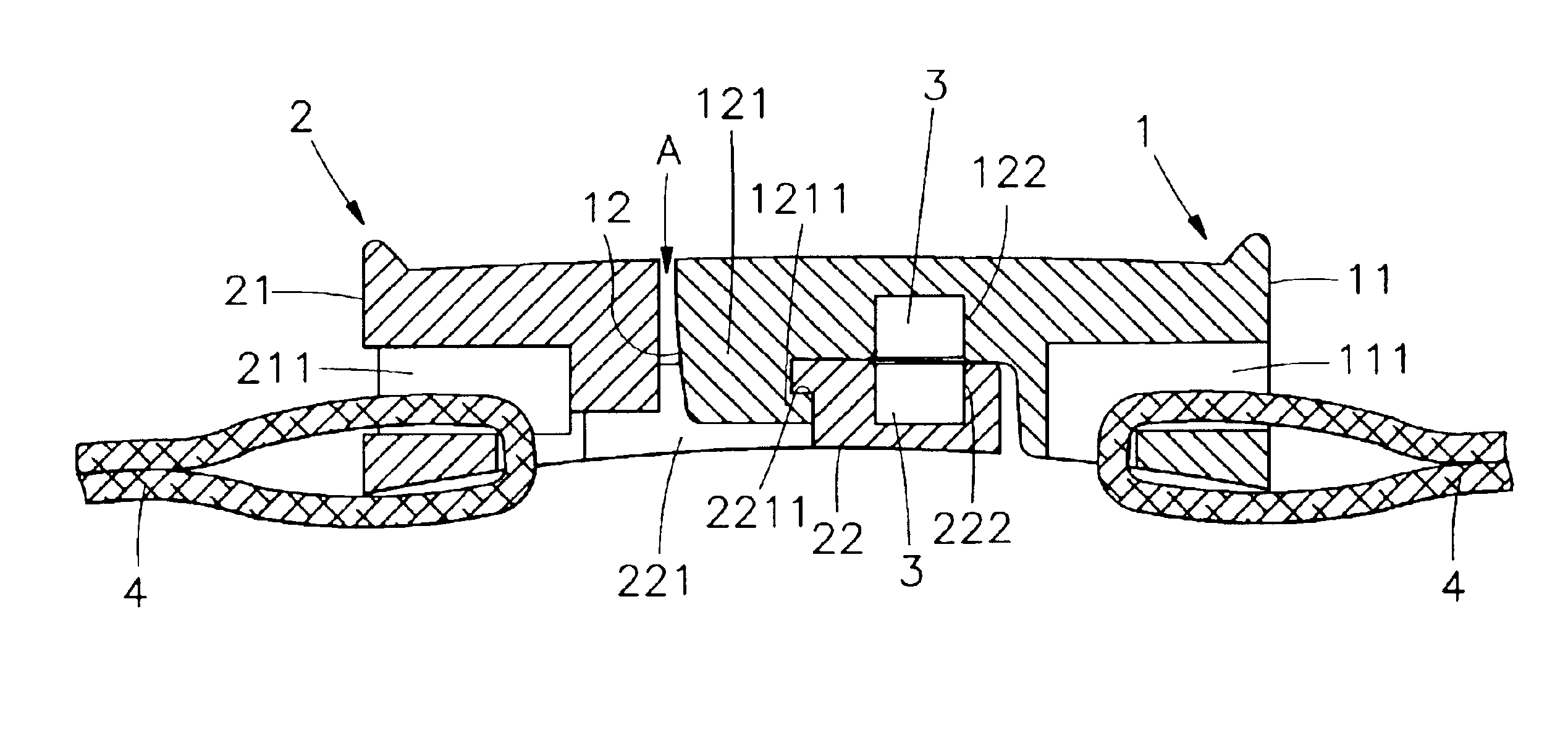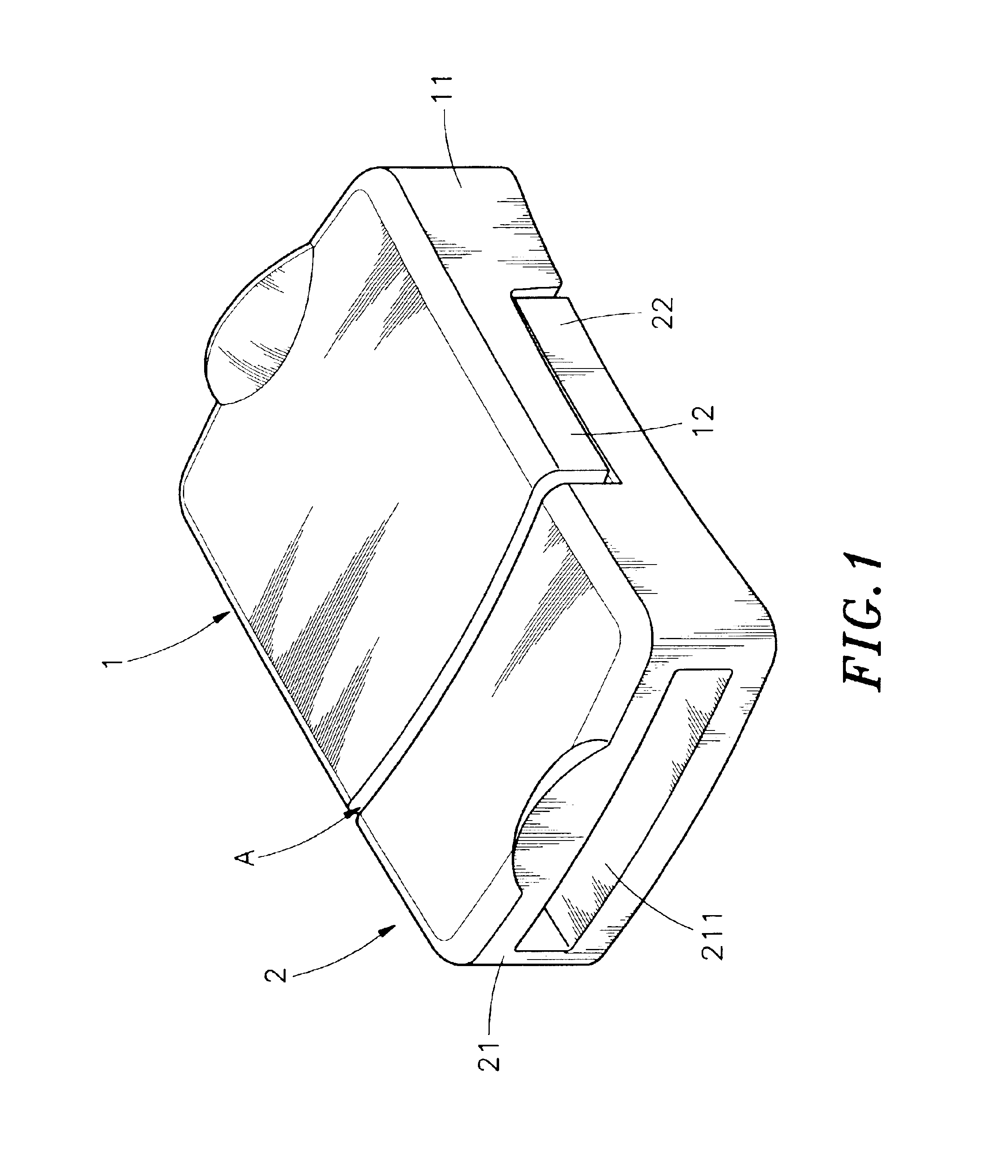Structure of magnetic buckle
a magnetic buckle and buckle technology, applied in the direction of buckles, snap fasteners, press-button fasteners, etc., can solve the problems of difficult for users to use fingers to press the buckle blocks, the b structure of the conventional buckle is more complicated, and the bb>1/b> will get easily deformed or even broken, so as to facilitate the alignment facilitate the steady insertion of the male buckle, and strengthen the resistance to the buckled state
- Summary
- Abstract
- Description
- Claims
- Application Information
AI Technical Summary
Benefits of technology
Problems solved by technology
Method used
Image
Examples
Embodiment Construction
Reference will be made in detail to the preferred embodiments of the invention, examples of which are illustrated in the accompanying drawings. Wherever possible, the same reference numbers are used in the drawings and the description to refer to the same or like parts.
Referring to FIGS. 1, 2 and 3, the magnetic buckle of the present invention comprises a male buckle 1 and a female buckle 2.
The male buckle 1 comprises a base portion 11, a buckling portion 12 is disposed on a flange of the base portion 11, wherein the buckling portion 12 comprises a buckling element 121 at a base part thereof, and a groove 122 at a rear portion of the buckling element 121 for inlaying a magnetic element 3. A protruded buckling block 1211 is disposed on an inner side of the buckling element 121. A through channel 111 is disposed one side of the base portion 11 of the male buckle 1 for fitting and positioning a knitted belt 4.
The female buckle 2 comprises a base portion 21, a buckling portion 22 is dis...
PUM
 Login to View More
Login to View More Abstract
Description
Claims
Application Information
 Login to View More
Login to View More - R&D
- Intellectual Property
- Life Sciences
- Materials
- Tech Scout
- Unparalleled Data Quality
- Higher Quality Content
- 60% Fewer Hallucinations
Browse by: Latest US Patents, China's latest patents, Technical Efficacy Thesaurus, Application Domain, Technology Topic, Popular Technical Reports.
© 2025 PatSnap. All rights reserved.Legal|Privacy policy|Modern Slavery Act Transparency Statement|Sitemap|About US| Contact US: help@patsnap.com



